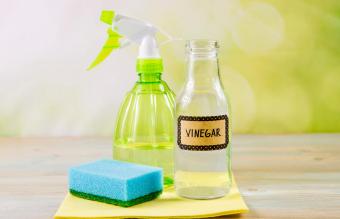
Using proper techniques with your washer and dryer can help you kill certain germs. Doing so regularly may ensure that your laundry isn't spreading potential germs that can lead to infections or viruses.
Does Washing Clothes Kill Germs?
Certain bacteria can survive and thrive in dirty laundry for months. Coming in contact with said laundry can lead to illnesses. To possibly kill some germs in your laundry, the recommended temperature is 140 degrees Fahrenheit, but only about five percent of households actually wash the majority or all of their clothing on the hot cycle. Clothes and linens washed below 140 degrees are unlikely to kill the germs present on the clothing and can even cross contaminate germs onto the next load.
What to Add to Your Washer to Clean It
To keep your washing machine clean and as germ-free as possible, use a bleach agent, tea tree oil, or white vinegar solution, and run a maintenance cycle on hot about once a month. This will reduce the biofilm that bacteria can thrive in.
What to Add to Keep Clothing Clean
Keep in mind if you opt to wash your white clothes or linens with a bleach product, that doing so on the cold cycle will not be enough to kill germs. When you want to clean and disinfect your laundry, note that:
- Bleach products should only be used on white clothing or linens.
- A few drops of tea tree oil can be added to your detergent as long as you wash the cycle on hot, but should never be added directly to your clothing as it could stain.
- Half a cup of white vinegar can be added to your whites and colors to kill germs and brighten your clothing.
Does the Dryer Kill Germs?
The dryer or an iron are great tools when it comes to disinfecting clothing and linens, especially if someone in the house is under the weather. Drying your clothing or linens on the highest setting until the clothing items are completely dry or ironing once the clothing has completely dried via line drying can kill germs effectively as temperatures reach at least 135 degrees in both cases. If someone is ill, it's best to wash and dry their clothing separately as to prevent further spreading of germs. You can also consider disinfecting the washing machine after an illness has run its course to prevent germ propagation.
Does Dry Cleaning Kill Germs?
Dry cleaners typically use heat between 120 and 150 degrees Fahrenheit, which is high enough to kill the majority of germs present on clothing. If you do not want to dry clean your clothes, using a steam cleaner that reaches temperatures at or above 325 degrees Fahrenheit can effectively kill germs as well.
Myths About Laundry and Killing Germs
Knowing what is and isn't true when it comes to keeping germs in your laundry at bay can help you maintain a clean living environment. Knowing how to effectively clean garments and linens, especially when someone is ill may help prevent germs from spreading to others.
Does Washing Clothes in Cold Water Kill Germs?
Washing clothing or linens in cold water will not sufficiently kill germs, and can leave a residue of germs in the washer. This can contaminate the next load and create an unpleasant breeding ground for bacteria. Keeping your washing machine clean, especially because of its wet environment, is extremely important as germs can thrive in moist areas and multiply rapidly.
Does Putting Laundry in a Dryer for Ten Minutes Kill Any Germs Present?
To kill germs effectively, you'll need to dry your clothes on the highest setting for about 30 minutes. Doing so for 10 minutes and on any other setting won't kill germs sufficiently.
How Doing Laundry Can Help Reduce Germs
Washing and drying clothes properly can assist in killing certain germs and viruses. Keep in mind that fully sanitizing and killing every single germ is not possible, but you can significantly reduce the numbers of harmful germs by practicing good laundry habits. Remember to always wash your hands after handling dirty laundry as it may help illnesses from spreading to others.







